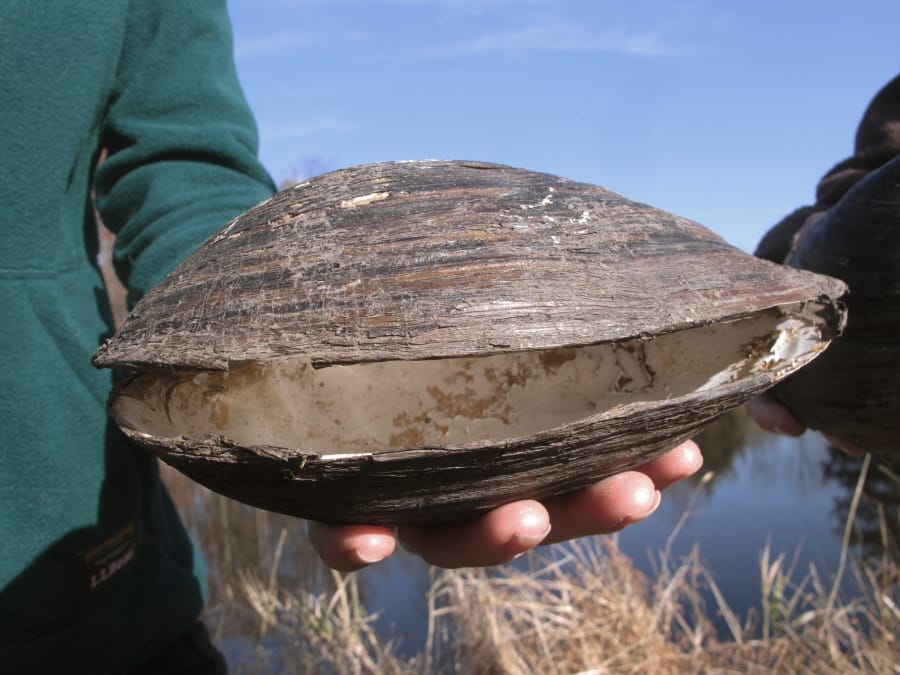FRANKLIN TOWNSHIP, N.J. — Most Americans know mussels as thumb-sized shellfish that occasionally adorn restaurant dinner plates.
But a colony of mussels as big as the dinner plates themselves has recently been wiped out from a New Jersey pond, where they had threatened to spread to the nearby Delaware River and wreak ecological havoc, as they already are doing in other parts of the world.
Federal wildlife officials and a New Jersey conservation group say they’re confident they have narrowly avoided a serious environmental problem by eradicating Chinese pond mussels from a former fish farm in Hunterdon County.
The mussels, in larvae form, hitched a ride to this country inside the gills of Asian carp that were imported for the Huey Property in Franklin Township and quickly began reproducing. Unlike the little mussels many Americans know, these ones can approach the size of footballs.
Their size and appetite enable them to out-compete native species for food and space. In many spots in Europe, the Chinese mussels have taken over waterways and pushed out not only native shellfish species, but also have altered river bottom conditions, harming or chasing away some species of fish.
“They can become a huge ecological nightmare,” said Emile DeVito, manager of science for the New Jersey Conservation Foundation. His group bought the land from private owners in 2007 and preserved it as open space.
Three years later, the presence of the Chinese mussels was discovered, causing great alarm. The nine deep ponds are at the headwaters of the Wickecheoke Creek, which flows into the Delaware River.
Had the mussels spread there, they could wipe out not only native shellfish, but also harm river bottom conditions upon which commercially and recreationally important fish depend, including shad and sturgeon.
The infestation was the first in North America, according to the U.S. Fish & Wildlife Service, which partnered with the New Jersey group on a plan to eradicate them.
First, the water levels were lowered in the ponds, killing the fish in them, which also included some invasive bighead carp, themselves a potentially serious environmental problem if they had escaped into nearby waterways.
Then a copper-based algae killer that also kills mollusks was introduced to the muddy bottoms. Beth Freiday, of the wildlife service, said officials are confident all the mussels were killed, although DNA testing is planned for next spring or summer to verify that.
Dozens of giant black shells from dead mussels were plucked from the mud, giving officials a glimpse of just how large the invasive shellfish grow.
They come from the Amur and Yangtze rivers in China, and in some places are used to cultivate pearls. They can live 12 to 14 years.
Infestations have been found in the Czech Republic, Italy, France, Austria, Belgium, Bulgaria, Germany, Hungary, Poland, Romania, Spain, Slovenia, Sweden and Ukraine. They also have turned up in Costa Rica, the Dominican Republic and the Philippines.
Eradicating them from those places has proven much trickier because lowering water levels is either impossible or impractical without killing virtually everything in a river.



